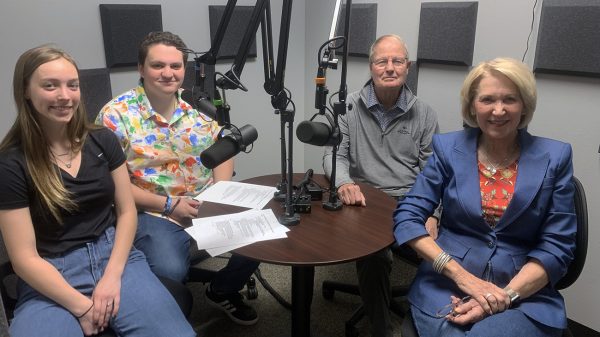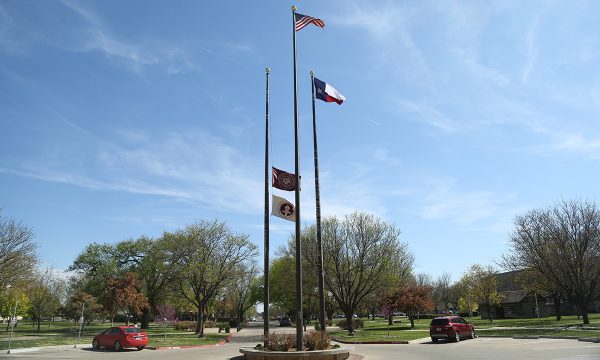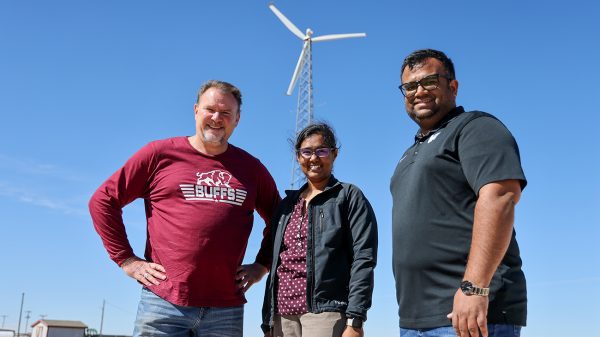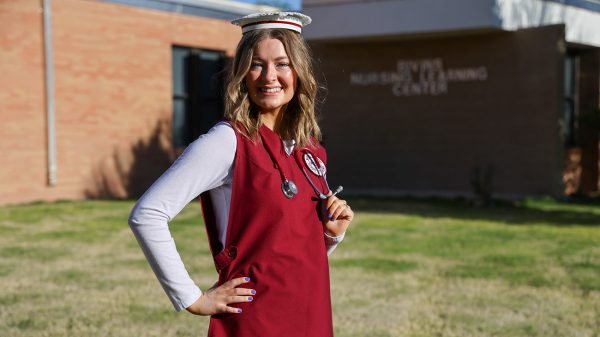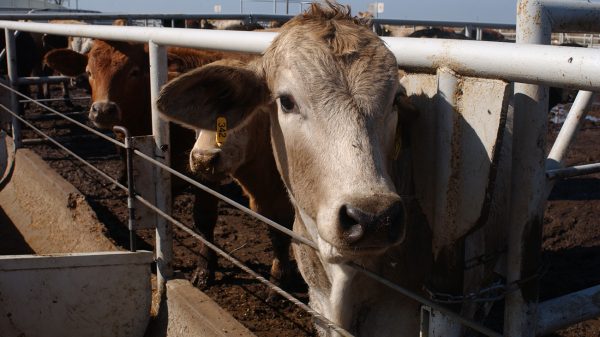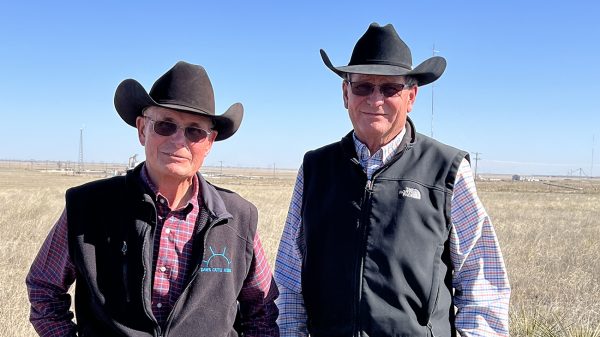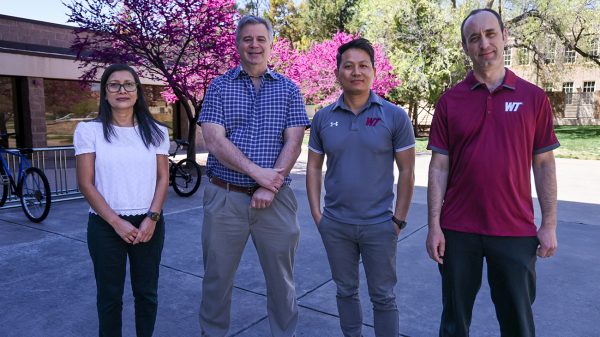Rural Panhandle Residents Sought for WT-Led Study into Flood Preparation, Mitigation
March 11, 2022
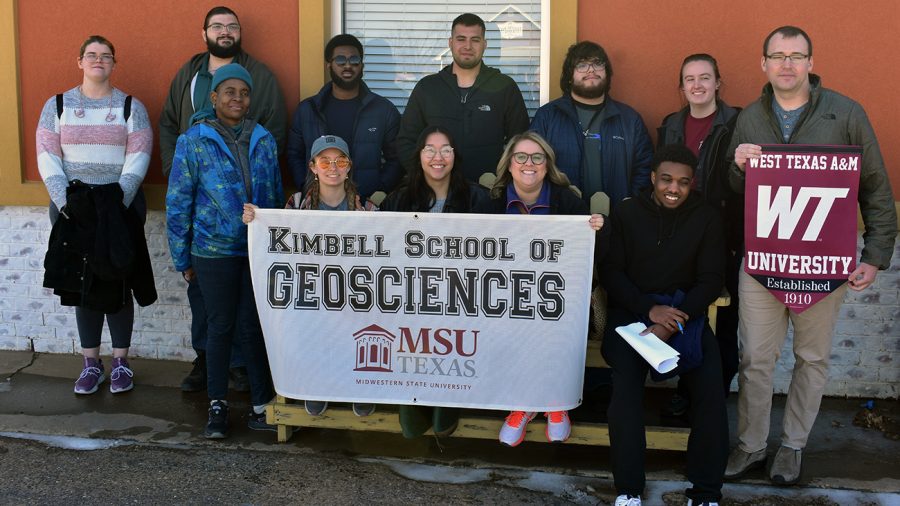
Copy by Chip Chandler, 806-651-2124, [email protected]
CANYON, Texas — West Texas A&M University students and faculty are seeking rural Texans who have suffered from damaging floods and may be eligible for state aid.
Students working with WT’s Dr. Erick Butler, Dr. Erik Crosman and Dr. Nathan Howell will spend the next six weeks traveling to small communities in the Texas Panhandle to interview residents who have experienced flooding as part of an outreach study for the Texas Water Development Board. WT is partnering with Dr. Jonathan Price and students in the Kimbell School of Geosciences at Midwestern State University’s McCoy College of Science, Math and Engineering.
The board has set up Regional Flood Planning Groups along river basins across the state, which each will develop, write and present a regional flood plan. The process was created by the Texas legislature in 2019 in response to Hurricane Harvey in 2017.
“The results of these flood plans will be higher coordination across the state on flood mitigation and planning, and the distribution of financial assistance for the resulting projects,” said Butler, the study’s lead investigator and associate professor of environmental engineering in WT’s College of Engineering.
Texas ranks highest in flood fatalities in the 48 contiguous states and the District of Columbia, and flooding, after extreme heat, is the No. 2 weather-related killer in Texas, said Crosman, assistant professor of environmental science in the Paul Engler College of Agriculture and Natural Sciences.
WT and MSU teams will cover the Upper Red River-Canadian River Planning Region, stretching from the top of the Panhandle down to the Wichita Falls area.
“This region is one of the most rural basins in the 15 that make up the state,” Butler said. “That makes it one of the most difficult to ascertain flood risk and to set up mitigation strategies, so it’s important that we can hear from a variety of voices in these rural communities.”
Residents who have knowledge about flood damage or needs for flood aid in this region are encouraged to contact Butler at 806-651-2271 or 806-881-5555 or via email at [email protected].
Ten environmental engineering, environmental science and engineering students from WT will travel around the Panhandle in collaboration with Midwestern State University students, who’ll cover the northeast part of the region, said Howell, WT’s Bell Helicopter Professor of Engineering.
WT surveyors will visit the following unincorporated and incorporated communities: Washburn, Goodnight, Wayside and Claude in Armstrong County; Silverton and Quitaque in Briscoe County; Conway, Groom, Panhandle, Skellytown and White Deer in Carson County; Hilburn, Summerfield, Sunnyside, Dimmitt, Hart and Nazareth in Castro County; Dozier, Quail, Samnorwood, Wellington and Dodson in Collingsworth County; Kerrick, Conlen, Dalhart, Coldwater and Texline in Dallam County; Bootleg, Dawn, Glenrio (N.M.) and Hereford in Deaf Smith County; Lelia Lake, Clarendon, Hedley and Howardwick in Donley County; and South Plains, Dougherty, McCoy, Aiken, Barwise, Floydada and Lockney in Floyd County.
Also, Alanreed, Back, Hoover, Pampa, Lefors and McLean in Gray County; Cotton Center, Hale, Hale Center, Petersburg, Plainview and Edmonson in Hale County; Memphis, Turkey, Estelline and Lakeview in Hall County; Morse, Gruver and Spearman in Hansford County; Hartley, Channing and Dalhart in Hartley County; Glazier and Canadian in Hemphill County; Lake Meredith Estates, Phillips, Plemons, Pringle, Whittenburg, Spring Creek, Texroy, Borger, Fritch, Stinnett and Sanford in Hutchinson County; and Lipscomb, Higgins, Booker, Darrouzett and Follett in Lipscomb County.
Plus, Masterson, Cactus, Dumas and Sunray in Moore County; Farnsworth, Waka, Perryton and Booker in Ochiltree County; Boise, Boys Ranch, Gruhlkey, Herring, Landergin, Magenta, Tascosa, Truillo, Wildorado, Adrian and Vega in Oldham County; Bushland and Amarillo in Potter County; Black, Lazbuddie, Bovina, Farwell and Friona in Parmer County; Umbarger, Canyon, Happy and Lake Tanglewood in Randall County; Wayside and Miami in Roberts County; Stratford and Texhoma in Sherman County; Vigo Park, Love, Kress, Tulia and Happy in Swisher County; and Allison, Briscoe, Kelton, Lela, Twitty, Mobeetie, Shamrock and Wheeler in Wheeler County.
They will split the following communities with Midwestern students: Carey, Tell and Childress in Childress County; Flomot, Northfield, Tee Pee City, Matador and Roaring Springs in Motley County.
“We’re excited that the legislature, through the Texas Water Development Board, has provided an opportunity to implement a statewide flood planning process,” said Floyd Hartman, assistant city manager for development services for the City of Amarillo. “I’m glad that WT and Midwestern are reaching out into rural communities and including them in this process so we can help prevent some major problems in the future. Texas is leading the nation in looking how to mitigate flood damage.”
WT students taking part in the project include Daisa Brown, master’s student in environmental science from Fort Worth; Chelsea Cole, senior environmental engineering major from Amarillo; Haley Isaacks, master’s student in engineering from Allen; Madilyn Ksor, junior environmental engineering major from Amarillo; Jed McInroe, master’s student in environmental science from Crosbyton; Adriana Rademacher, master’s student in environmental science from Splendora; Stephanie Simonsen, master’s student in environmental science from Findlay, Ohio; Kennedy Venneman, master’s student in engineering from Gruver; Brayan Morales, senior environmental engineering major from Gruver; and Cheyenne Garcia, junior environmental engineering major from Austin.
Meeting regional needs as a Regional Research University is a key component of the University’s long-range plan, WT 125: From the Panhandle to the World.
That plan is fueled by the historic, $125 million One West comprehensive fundraising campaign.
About West Texas A&M University
WT is located in Canyon, Texas, on a 342-acre residential campus. Established in 1910, the University has been part of The Texas A&M University System since 1990. WT, a Hispanic Serving Institution since 2016, boasts an enrollment of about 10,000 and offers 59 undergraduate degree programs, 39 master’s degrees and two doctoral degrees. The University is also home to the Panhandle-Plains Historical Museum, the largest history museum in the state and the home of one of the Southwest’s finest art collections. The Buffaloes are a member of the NCAA Division II Lone Star Conference and offers 14 men’s and women’s athletics programs.




